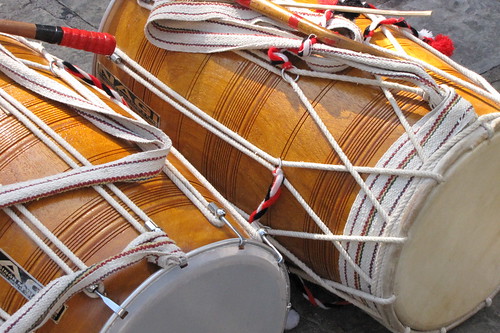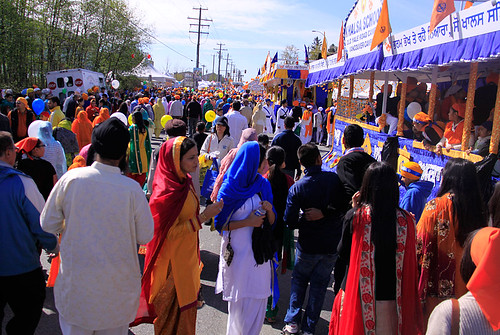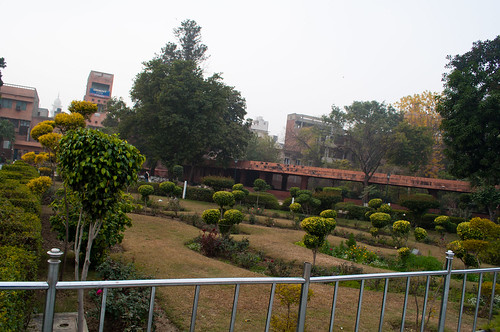‘Vaisakhi’ is an ancient harvest festival in Punjab, the
northern state of India
To celebrate Vaisakhi people buy new clothes, and enjoy by
singing and dancing and eating traditional food such as jalebi’s, samosas, and
many more. Some of the traditional dances that take place during Vaisakhi are 'Bhangra' and ‘Gidda’ danced by both
men and women respectively. These dances are very easy to do but really
energetic and can be danced by the beat of a ‘dhol’ which is an Indian drum.

Vaisakhi is probably one of the most special days for the
Sikh community and also one of the most colourful days too. Vaisakhi was
created by the tenth Guru, Guru Gobind Singh Ji to mark the foundation of
Khalsa Panth (community of Singhs (men) and Kaurs (females). Another celebration of Vaisakhi is the ‘Nagar Kirtan’ also known
as the Sikh Parade which happens once a year in the month of May during the
long weekend. The Sikh parade is led by the holy scripture known as the ‘Guru
Granth Sahib Ji’ and then followed by thousands of Sikh people. Anyone is
allowed to participate in the Sikh parade. People come out during the Sikh
parade to do ‘Seva’ which is volunteering to offer free food and doing any
other voluntary work and of course to enjoy the day.

'Nagar Kirtan' Sikh Parade
image from Flickr Yahoo
Lastly, Vaisakhi is also celebrated to remember those who
suffered and died during the massacre of innocent Sikh’s by the British Empire . This happened during the independence
movement to free India Golden Temple

Image from Flickr Yahoo
'Jallianwala Bagh'
This is the place where soldiers opened fire on all the innocent, unarmed men, women and children. You can see the gun shots through the bricks when up close. Now it is a peaceful place for visitors and tourists to visit.
No comments:
Post a Comment